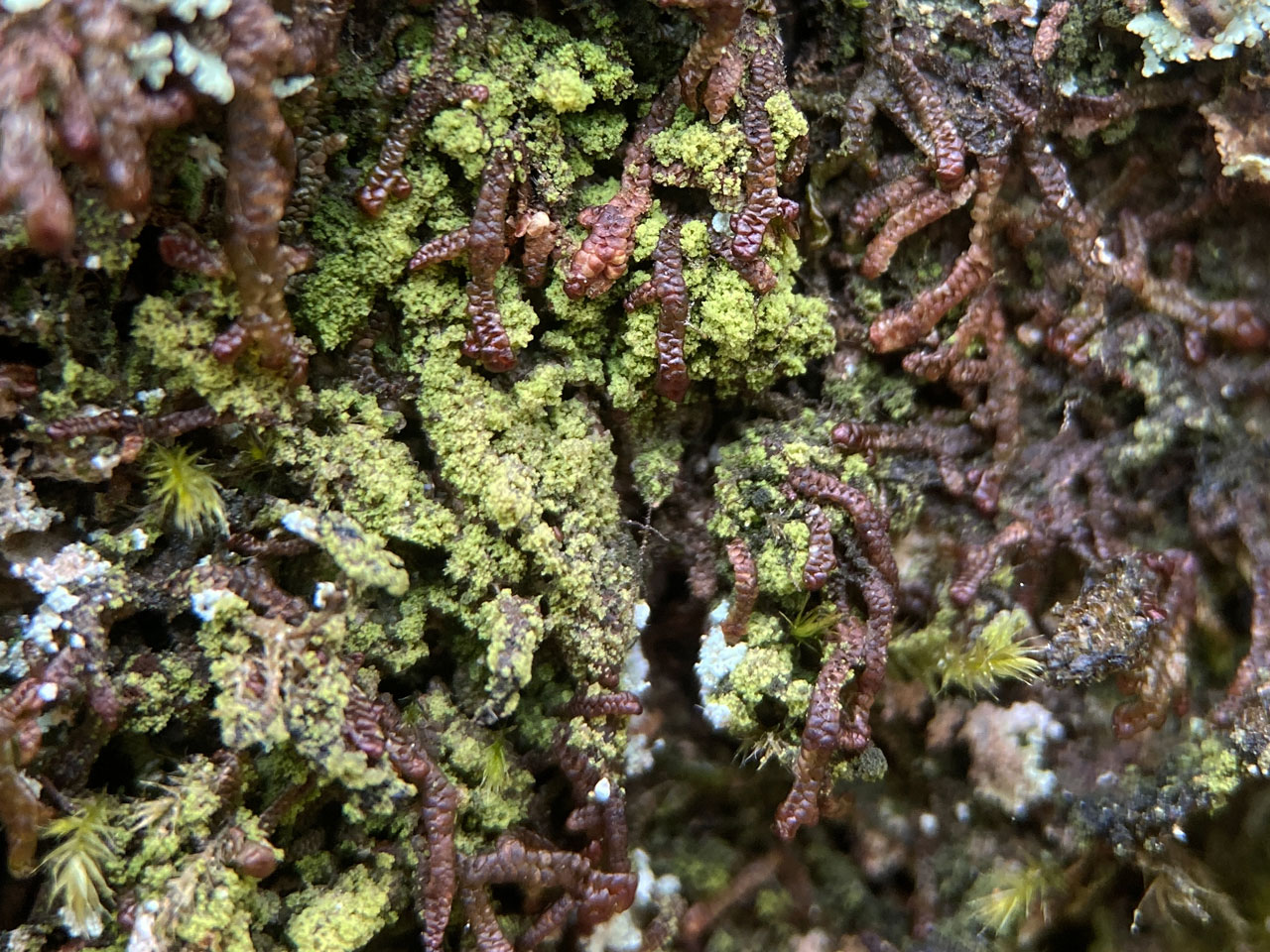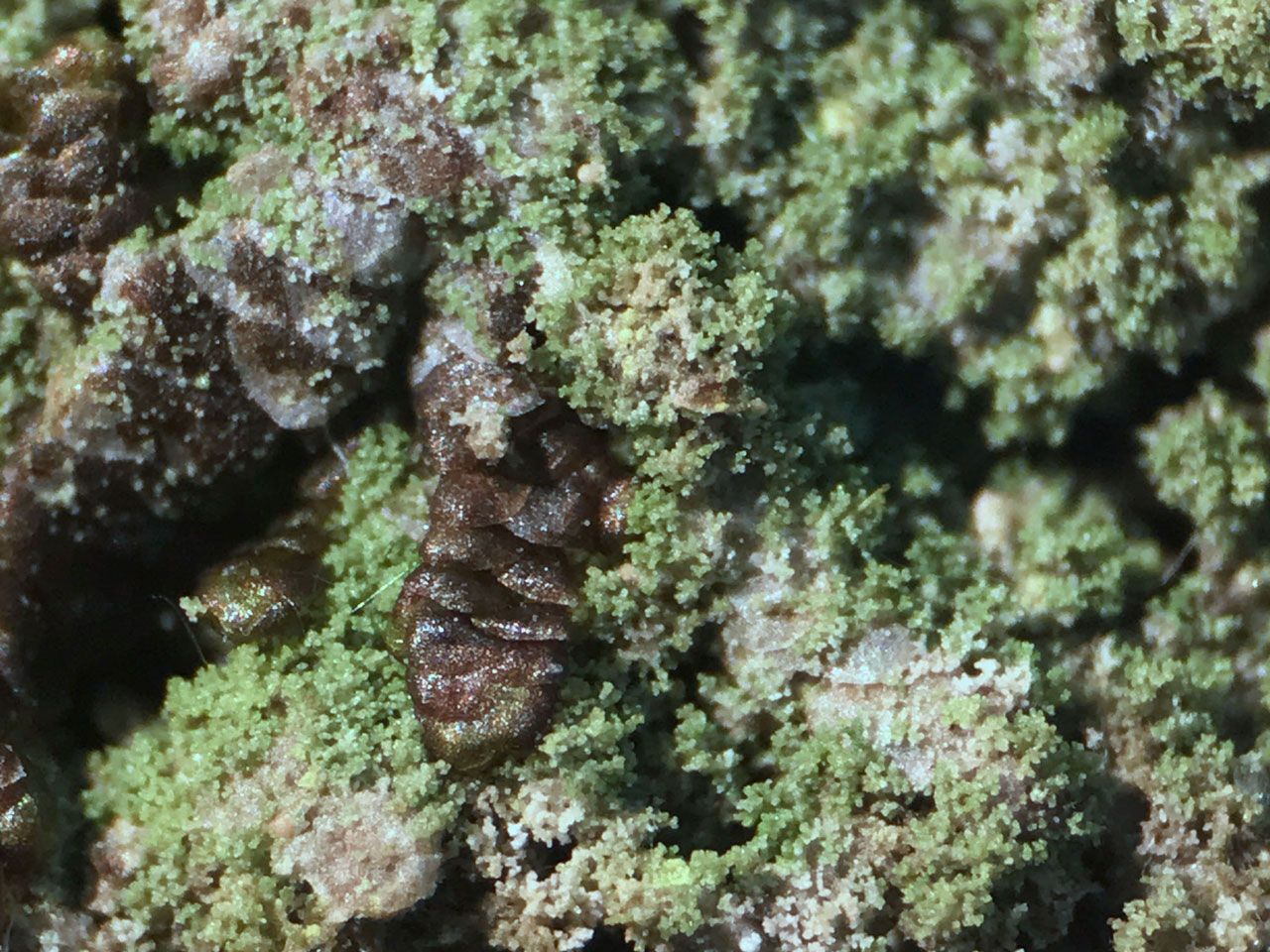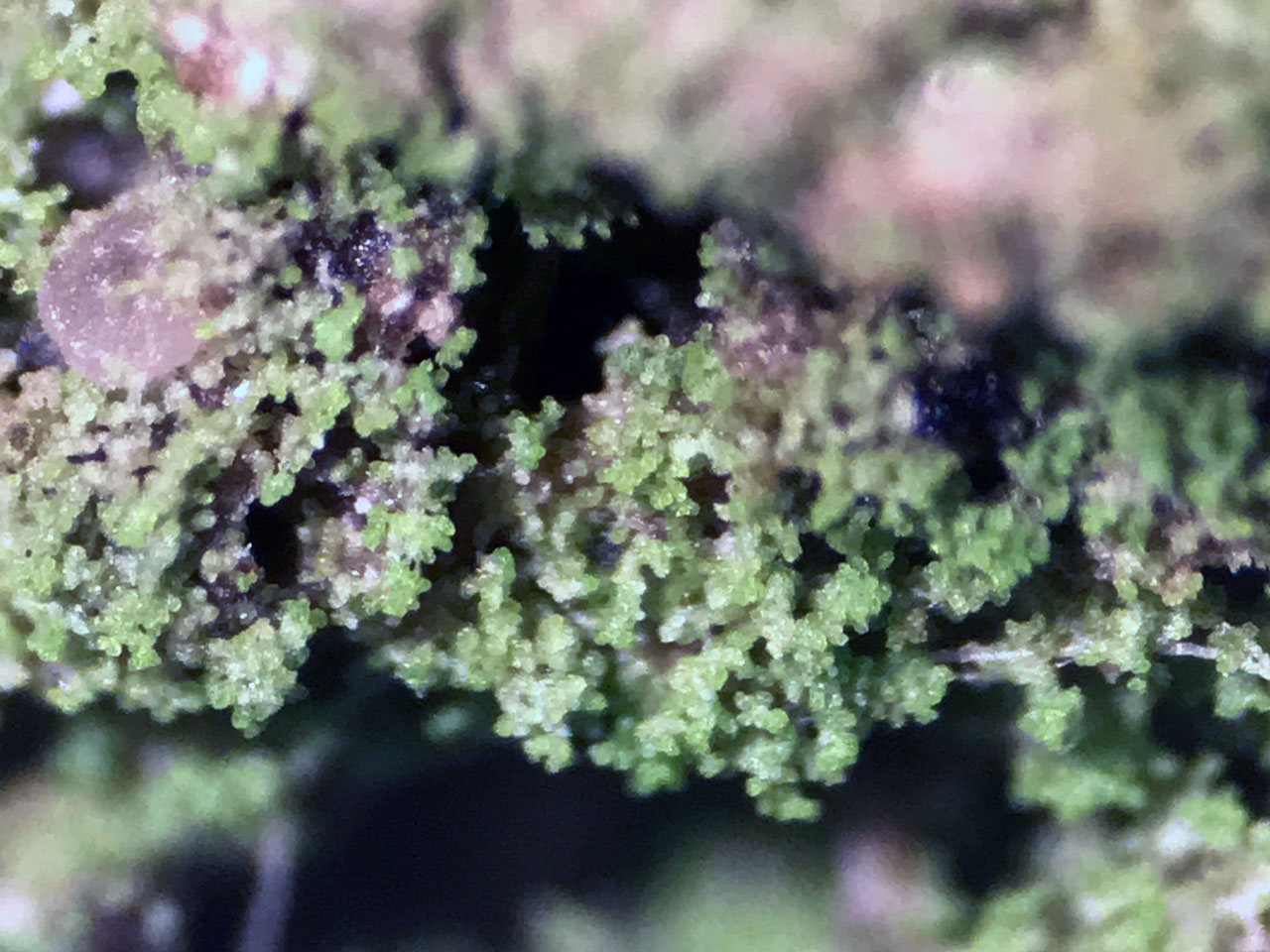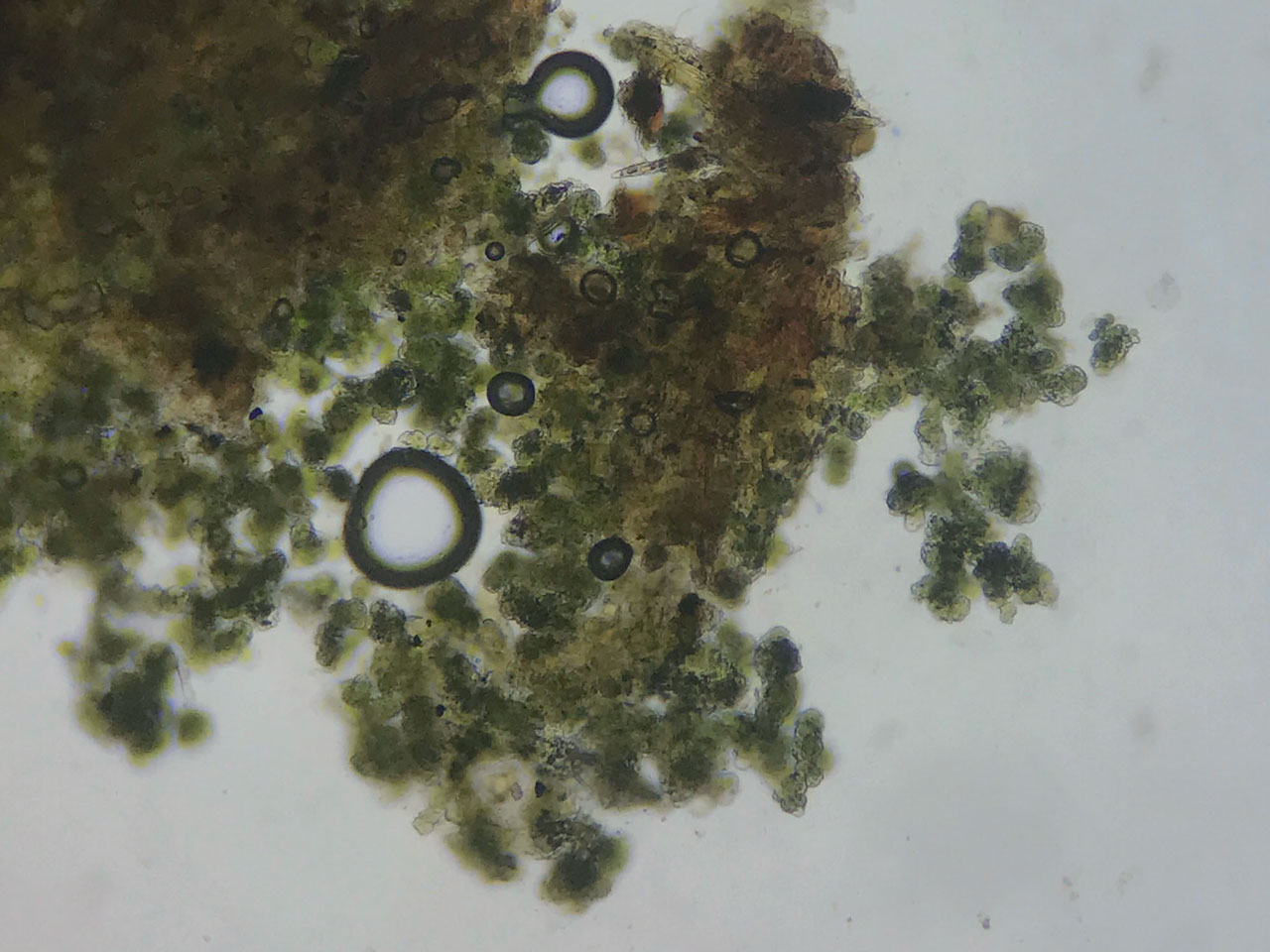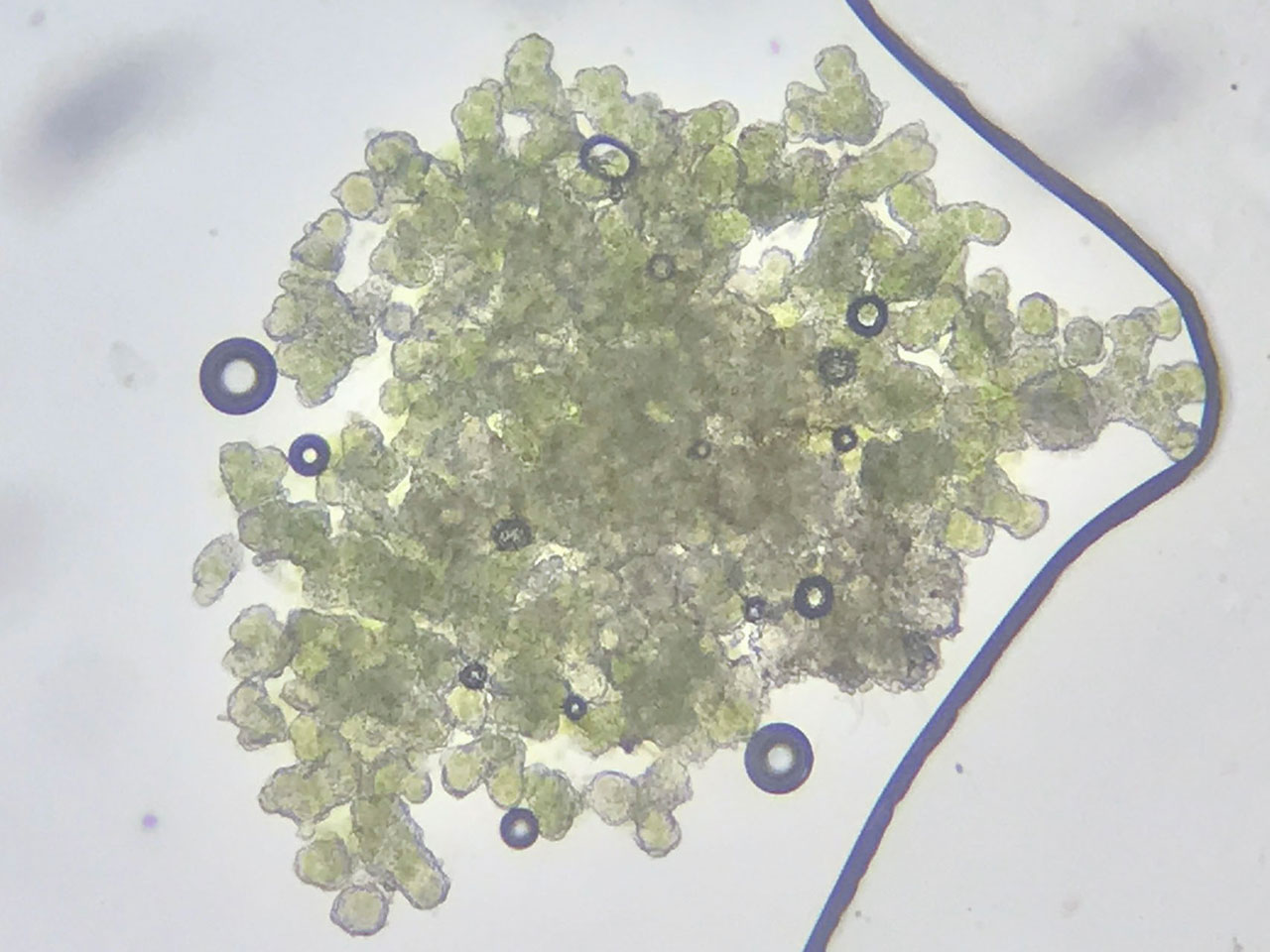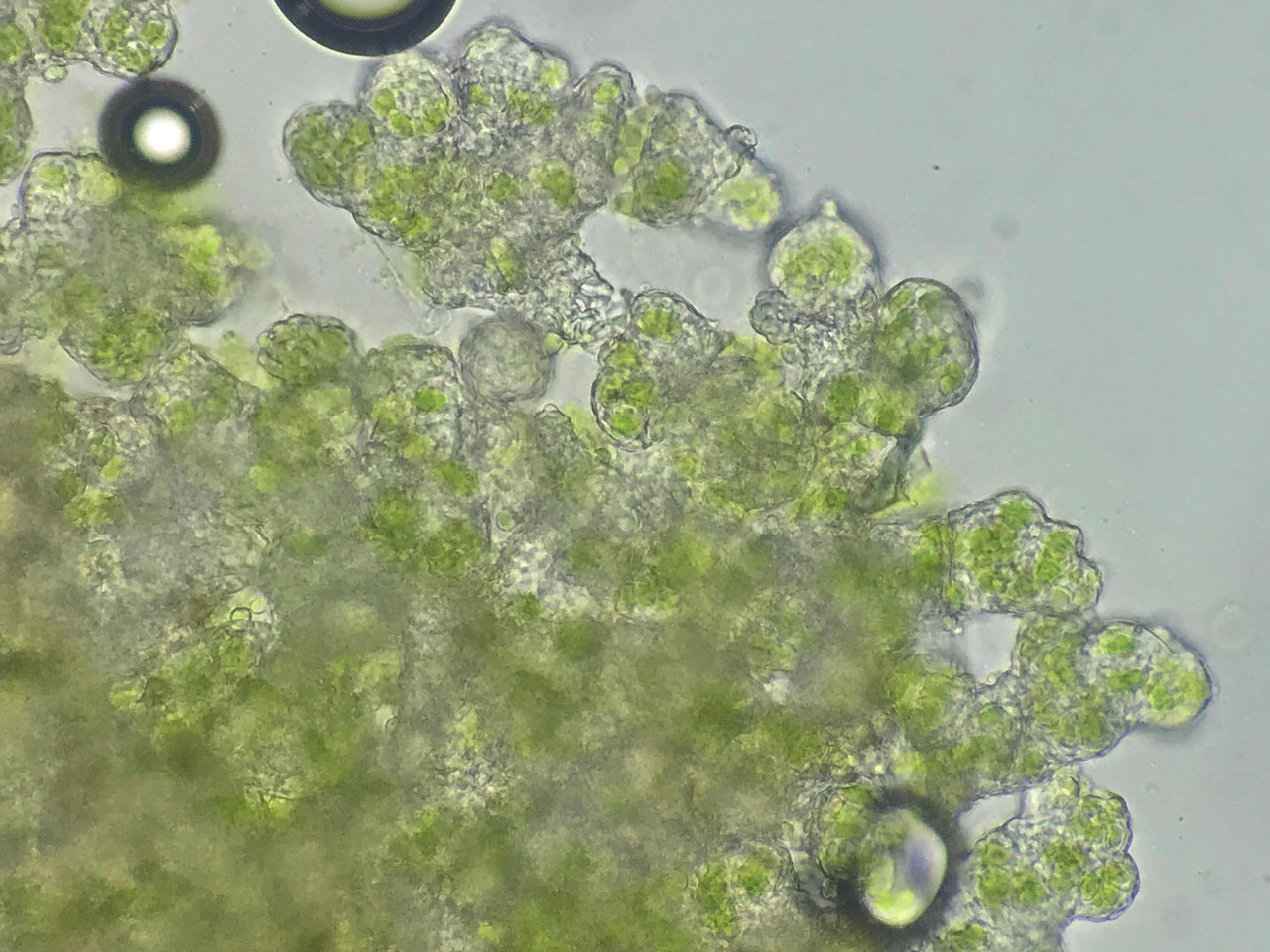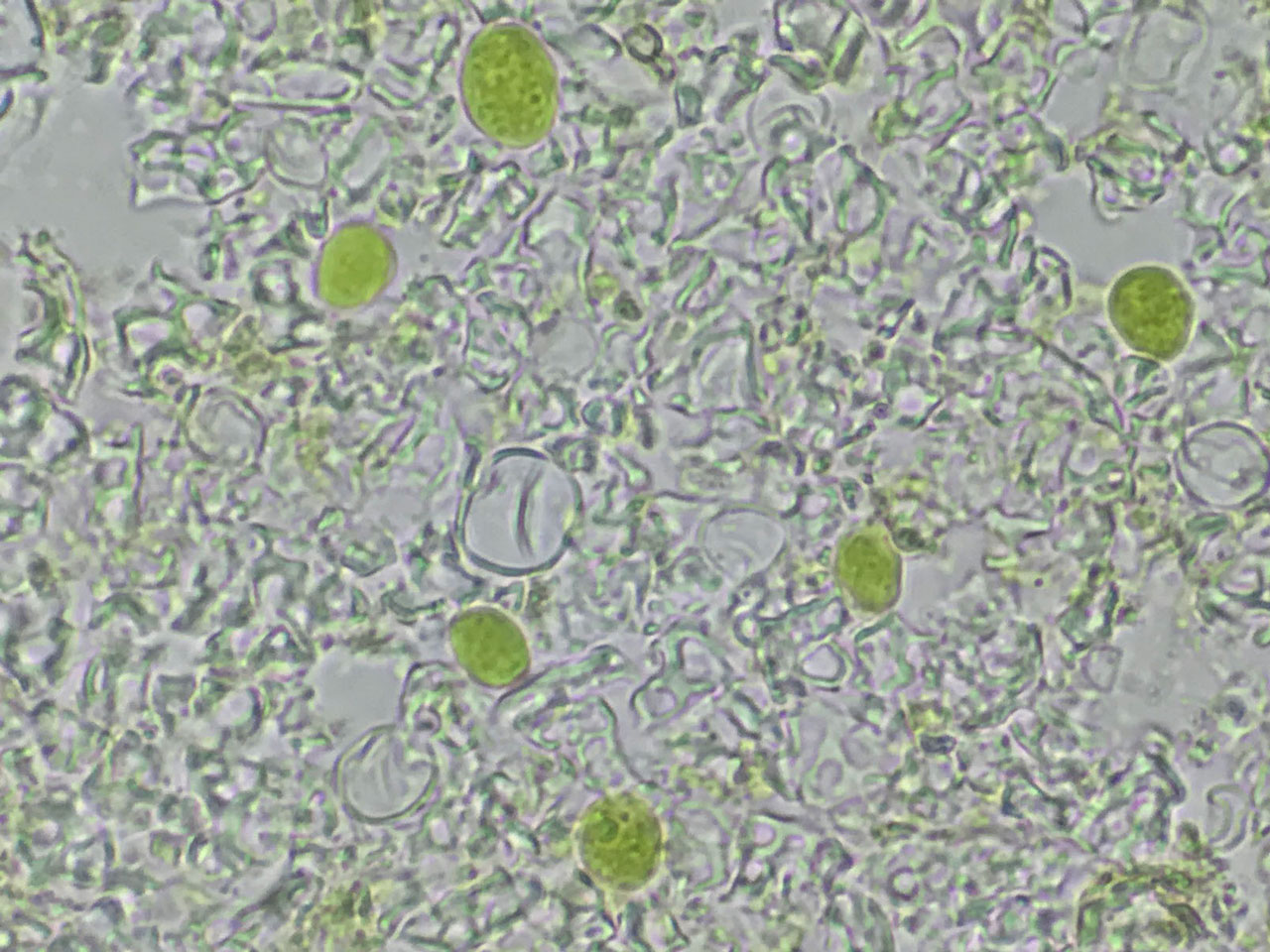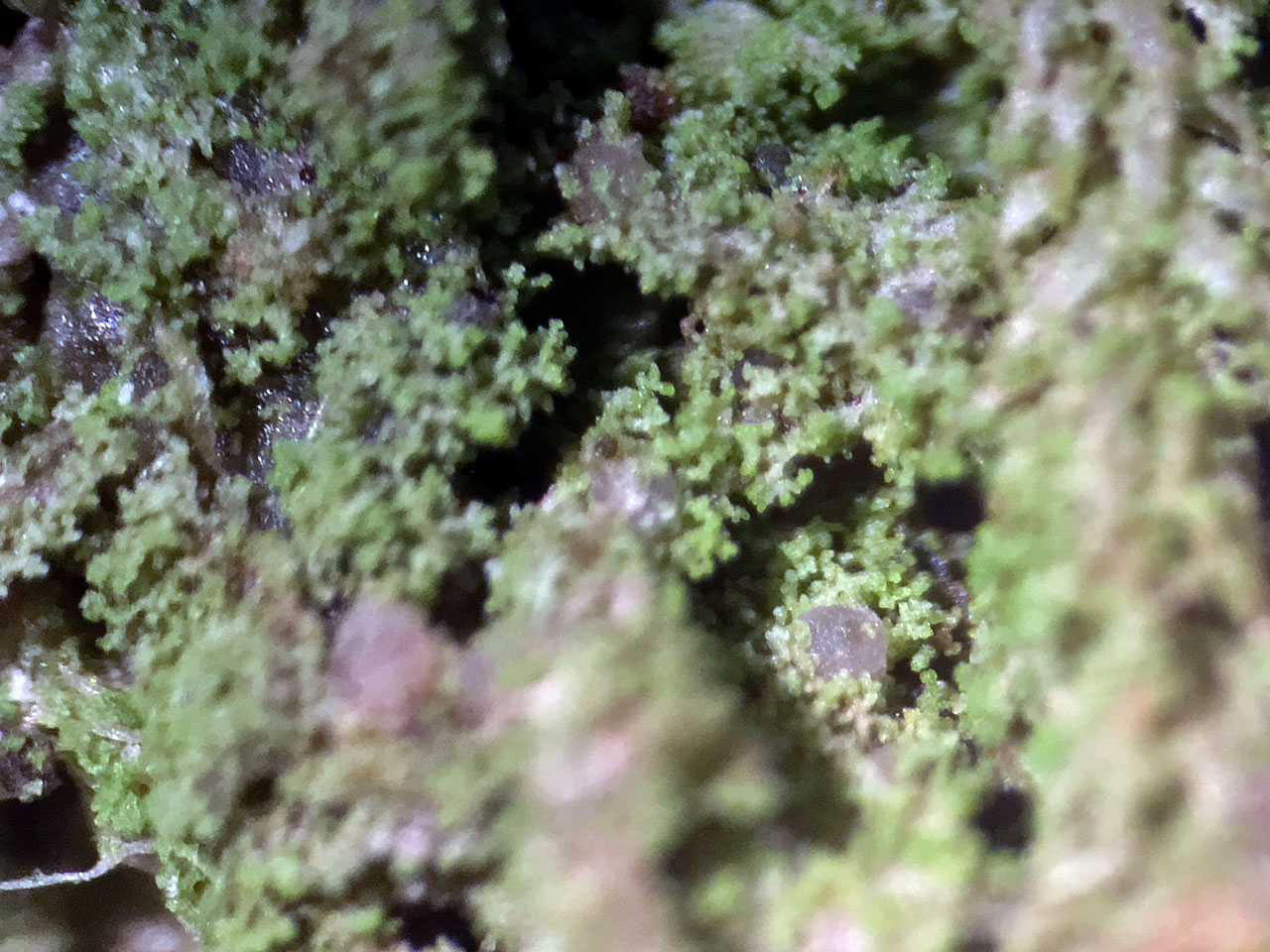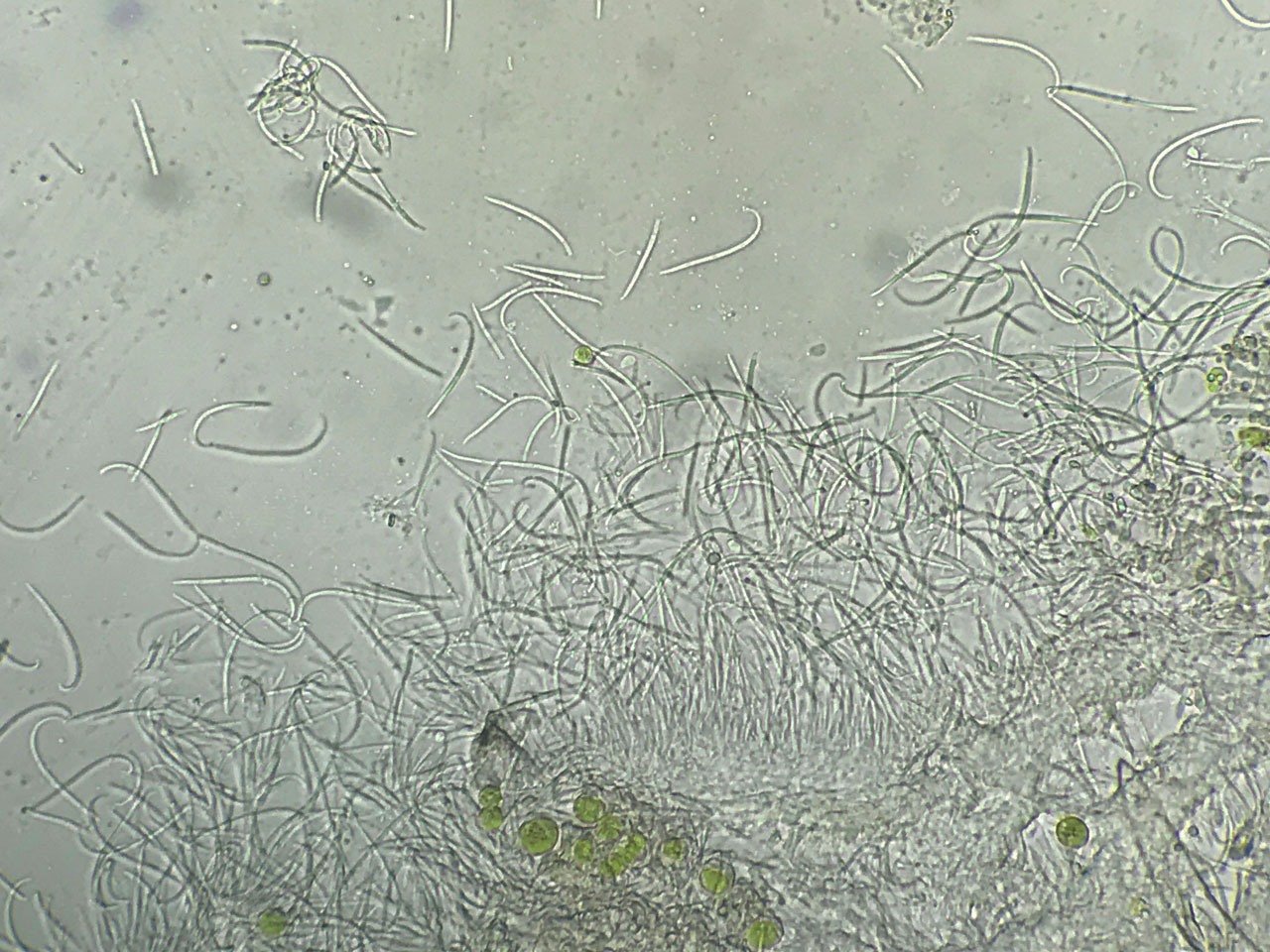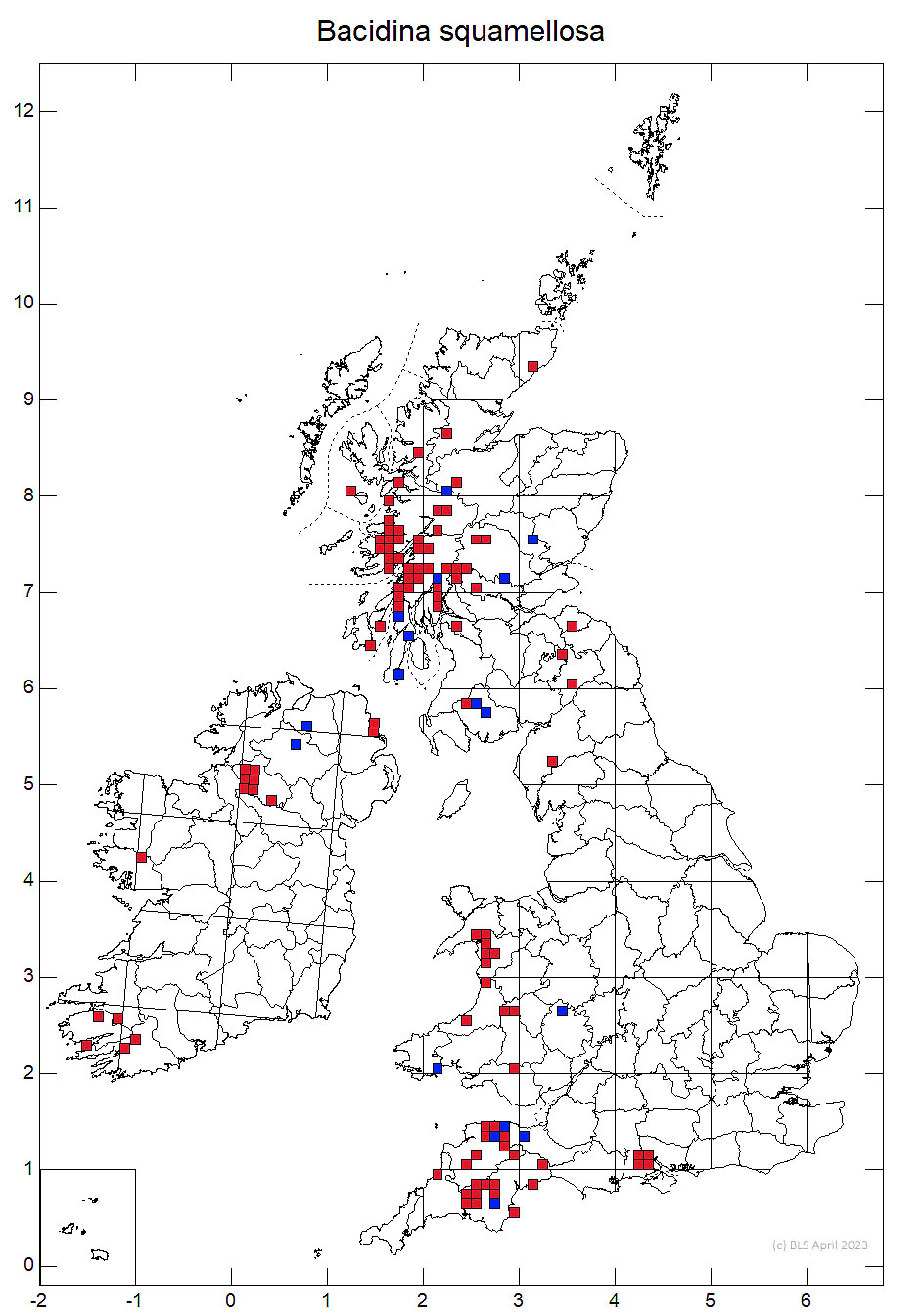Bacidina celtica
This lichen forms mats of normally sterile, shiny yellowish green, delicate, richly branched and coralloid ‘isidia’ on mildly acidic to base rich bark in humid locations in oceanic woods, including on old Oaks and on Sallow. It is typically sterile, so easily over looked, especially as is often grows with sterile isidiate Micarea prasina s. lat. taxa, most likely Micarea aeruginoprasina or possibly Micarea atroviridis, in the more acidic habitats. These isidia, however, dull not shiny, are ecorticate and have photobiont cells all <8 μm diam.
Thallus pale yellowish green, dominated by deeply dissected squamules resembling richly branched coralloid isidia, 18–30 μm diam. and to 300 μm tall, corticate, with a shiny surface when dry; photobiont cells 5–12 μm diam. Apothecia 0.3–0.8 mm diam., usually absent, at first barrel-shaped but soon becoming flat, white or with a pink- orange disc and whitish margin; true exciple colourless, with cellular lumina 4–7 (– 9.5) μm diam. and to 12 μm long; hymenium 50–55 μm high, colourless; epithecium colourless, K–; hypothecium colourless; paraphyses 1.2–1.7 μm diam., unbranched or a few forked near the apices, apices 2.7–4 μm diam. Ascospores 47–71 × 1.5–1.7 μm, narrowly 3- to 5-septate, acicular. Pycnidia rare, immersed in the thallus to sessile.
The observation by Canon et al (2021), that the European material probably belongs to a distinct, though related species to the Florida taxon named Bacidina squamellosa, has since been confirmed. The European species is now named Bacidina celtica (van den Boom & Esteve Llop, 2021 & Ekman, 2023). The delicate, richly branched, coralloid ‘isidia’ and habitat ecology distinguish B. squamellosa from other members of Bacidina. When sterile, most easily confused with sterile, isidiose morphs of Micarea prasina s. lat. most likely Micarea aeruginoprasina or possibly Micarea atroviridis (‘isidia’ dull, ecorticate and photobiont cells all <8 μm diam.) and of the isidate Coenogonium confusum or Porina rosei (both photobiont Trentepohlia). Apothecia are rare, but when mature closely resemble those of Coenogonium luteum or Coenogonium confusum.
On bark, often over bryophytes, of a wide range of deciduous trees and shrubs in humid oceanic woodlands on mildly acidic to base rich bark. Recorded as terricolous in Portugal (van den Boom & Esteve Llop, 2021)

Frequent in W. Britain and Ireland. Also in the New Forest (Hampshire) and possibly overlooked in other lowland southern oceanic woods.
A local species of lichen rich oceanic woodlands, but is not confined to veteran trees and in very humid sites it can readily colonise smaller trees and bushes such as Sallow.
Britain: Notable
Cannon, P., Ekman, S., Kistenich, S., LaGreca, S., Printzen, C., Timdal, E., Aptroot, A., Coppins, B., Fletcher, A., Sanderson, N. & Simkin, J. (2021). Lecanorales: Ramalinaceae, including the genera Bacidia, Bacidina, Bellicidia, Biatora, Bibbya, Bilimbia, Cliostomum, Kiliasia, Lecania, Megalaria, Mycobilimbia, Phyllopsora, Ramalina, Scutula, Thalloidima, Toninia, Toniniopsis and Tylothallia. Revisions of British and Irish Lichens 11: 1-82.
Ekman, S. (2023), Four new and two resurrected species of Bacidina from Sweden, with notes and a preliminary key to the known Scandinavian species. Nordic Journal of Botany e03846. Link
van den Boom, P. P. G. and Llop, E. 2021. Bacidina celtica (Ramalinaceae), a new lichen species from western Europe. Sydowia 74: 65–70.
Text by Neil A. Sanderson based on Cannon et al (2021)
